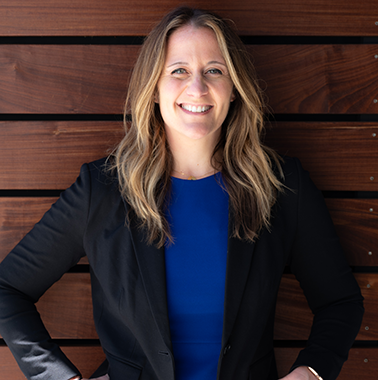Product marketing touches every function of a MedTech organization. I often describe it as the central spoke of the wheel, or the business lead that directs and guides each function in critical ways. Marketing know-how keeps a company ahead of market trends and perceptions. These insights can help guide R&D to track closely with user needs and market realities, and help position marketing messages. The right approach can boost sales, strengthen organizational cohesion, tighten strategic focus and spike motivation companywide.
During my time in the industry, digital informatics, robotics, remote collaboration and AI (Artificial Intelligence) technologies have proliferated, along with a greater focus on utilizing digital marketing tools and online forums for awareness and advocacy development. These have created new information ecosystems to ensure vital data get to the right people immediately. This improves the quantity and quality of real-time information that healthcare providers can access to deliver care in more predictable and reliable ways.
Post-Clearance Marketing Pearls
Your marketing campaign should be ready to burst out of the starting gate as soon as your product receives FDA clearance. While the pearls below apply to medical device marketing adjacent to FDA clearance, they can also serve as guides at other times in a product’s life cycle and across other industries. I’ve seen their value in practice, and they’ve helped me find and stay on the productive path.
Be inspired. My inspiration happened organically due to a natural interest in health care and an early opportunity to experience the implementation of a first-ever FDA-cleared technology in a surgical practice as an intern in college. I was quickly drawn to the market dynamics and creativity required to devise and implement a successful market introduction program in this high-stakes arena. Over time, my inspiration pushed me toward positions of increasing responsibility in places where being inspired is commonplace, and where I am challenged and rewarded in fulfilling ways.
It took a while to appreciate what a powerful motivator my own passion was. For me, it’s a driving force that pulls me toward goals, gives meaning to my work and makes the journey fun. I’ve also noticed that it’s a marker in others for creativity, productivity and positivity. If you believe your work is important, and the technology or product that you are representing has great meaning, you are sitting on a well of energy and resilience, and opportunity for success.
Keep it simple. Medical technology can be very complex, but the best marketing campaigns are often the simplest. You want to break down your product’s unique advantages in a personal way that differentiates it from all others. Capturing the compelling essence of a new product can make all the difference in getting people interested enough to try it. You know you’ve found the right message when a potential customer’s eyes light up upon hearing it.
I have seen this recently with our company’s radiation-blocking technology for cardiac catheterization and other interventional procedures. When prospective users hear us explain, “It protects everyone in the room by blocking radiation at the source, all at the touch of a button,” the effect is immediate. It ignites interest among people who’ve been living with workplace radiation risk for far too long. Short, sweet and effective are your guides here.
Find allies and enlist them. At every point in my career, I’ve found that enlisting physician advocates and learning from them is one of the most powerful ways to learn about your product’s unique advantages and amplify exposure in otherwise impenetrable spheres. Prior to FDA clearance, while your device is still in development, identify the opinion leaders who take an early interest in your technology and nurture those relationships going forward. Often, these people can be as passionate about your product as you are and will prove invaluable in spreading the message where it needs to go. They’ve often lived through the issue you’re addressing and can be sources of really beautiful storytelling, a resource not to be overlooked.
Listen to and learn from your end users. Product feedback from a larger user group can happen only after FDA clearance. Listen not only to your allies, but to potential users who may be neutral or negative early on—this is how you get the unvarnished truth and uncover further needs. These folks can also be a source of inspiration because they can validate a good idea as quickly as they shoot down a bad one. They’re not just the people you hope will use your product; they’re the people who will tell you exactly what features, functionality and other factors it needs to make it irresistible. Listen to them!
Commit to continuous improvement. Hand in glove with listening is acting on the information you receive. This means building a continuous improvement component into every marketing campaign. The marketing message that flows outward generates a response that flows inward, informing the whole process in an iterative fashion. As opportunities to enhance your message are identified, be sure to make the required changes. It makes your product more attractive and demonstrates respect, responsiveness and commitment to customers that they recognize and appreciate. The market will speak to you—keep your ears open!
Tell the right stories in the right places. Put your message where it will be seen. This sounds obvious but many times we try to blast our message out to the world, taking a longer path to find our true users. Find trade publications, conferences, professional associations, online media and other forums where customers and gatekeepers interact. Prepare compelling fact-based narratives about your product for them. Make it personal. If your product is fundamentally sound, inevitably, some of the people who receive your message will respond and want to engage; take note of who they are and follow up. They may turn into customers or allies who can help you convince gatekeepers with budget authority or reach out to other advocates.
As marketers, we need to know the market factors involved in adopting a new technology, and why a specific technology is so valuable to each customer. Once the right messages are in the right places, it will feel like a snowball rolling downhill; the right people will come and join you.
Keep it real. It may be cliché, but it’s good advice: authenticity will always win. This goes for all your interpersonal interactions, but it also goes for a marketing approach. No matter how tempting, it never makes sense to oversell, hype or mischaracterize a product you’re selling, especially in a field where human lives hang in the balance. We chose this path because we believe it matters. Undermining that with insincerity or worse would be tragic. Honoring your products and industry with good faith, honesty and true passion is the surest path to success.
Developing medical technology takes heroic engineering effort and expertise, and we rightly celebrate those who invent the devices that serve humanity’s pressing healthcare needs. However, creating is only the first step in getting it to the people who will ultimately need it. Putting new medical technologies into the hands of caregivers or patients requires marketing savvy and expertise. Your marketing programs should do justice to the innovative technologies you are representing. It’s a mission-critical skillset for any company with a product to sell, but for a medical device manufacturer trying to improve the way we protect and preserve lives, it’s also a calling. I answered that call almost 20 years ago, embracing the challenge and the journey, and since then, there’s been no looking back.







